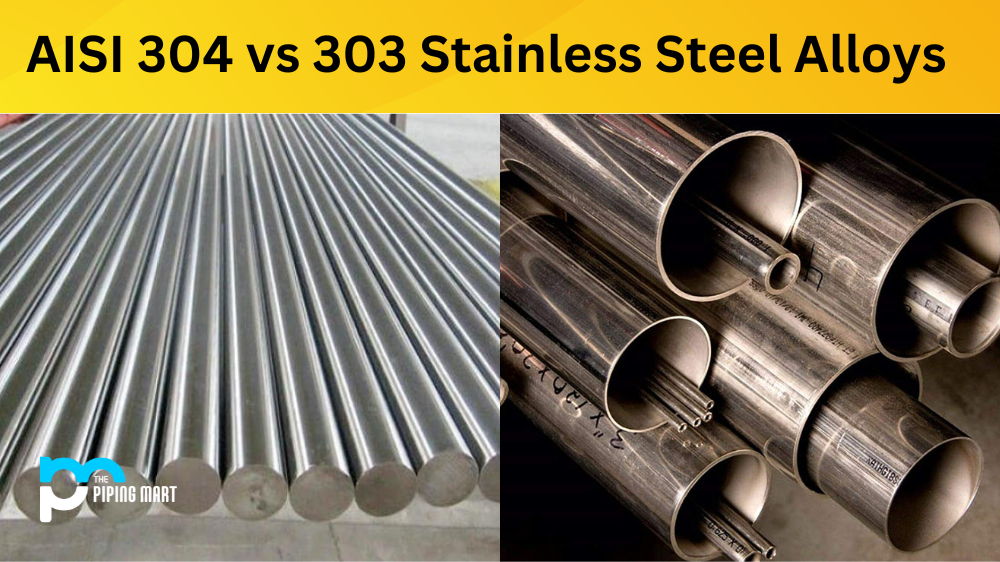When selecting a stainless steel alloy, there are myriad choices available. Two of the most popular alloys used in industrial applications are AISI 304 and 303 stainless steel. Both alloys have excellent corrosion resistance, but which is better for specific applications? Read on to learn more about the differences between AISI 304 and 303 stainless steel alloys.
Difference Between AISI 304 and 303
AISI 304 and 303 are two types of stainless steel commonly used in various industries. Both steel sheets offer several benefits but also have some key differences.
Composition
AISI 304 contains 18% chromium and 8% nickel, while AISI 303 contains 17% chromium and 8-10% nickel. In addition, AISI 303 has slightly higher amounts of sulfur and phosphorus than AISI 304. As a result, AISI 303 is more accessible to the machine than AISI 304 because its higher sulfur content reduces tool friction on the material.
Strength & Hardness
Both alloys offer excellent strength-to-weight ratios, making them suitable for various structural applications. In terms of hardness, both alloys feature a Rockwell scale rating of approximately B70-B80 when annealed or cold-worked (depending on the thickness). In addition, both materials can be hardened through cold working or heat treatment (though the specific heat treatments may vary).
Regarding flexibility, AISI 304 is slightly better than AISI 303 due to its additional nickel content, which increases its ability to withstand stress at elevated temperatures and its higher corrosion resistance.
Hardness
Another critical difference between AISI 304 and 303 is their hardness. AISI 304 is more rigid steel than AISI 303, making it better suited for applications where high strength is required. However, this also makes AISI 304 more challenging to machine than AISI 303.
Cost
The cost of AISI 304 and 303 can also be a factor when deciding which steel to use for a particular application. Generally speaking, AISI 304 is more expensive than AISI 303 due to its higher hardness and chromium content. However, both sheets of steel are relatively affordable compared to other types of stainless steel.
Applications
AISI 304 and 303 are commonly used in various industries due to their excellent properties. Some typical applications for these steels include food processing equipment, medical devices, architectural features, and automotive components.
Conclusion:
In conclusion, AISI 304 and 303 stainless steel alloys provide excellent corrosion resistance in many industrial applications. However, their composition varies slightly in chromium and nickel content, resulting in different mechanical properties such as strength, hardness, flexibility, etc. Therefore, when selecting a material for your application, it is essential to consider its corrosion resistance and mechanical properties so that you can choose the alloy that best suits your needs. With this knowledge, you should now be able to make an informed decision when selecting between these two popular stainless steel alloys!

Abhishek is a seasoned blogger and industry expert, sharing his insights and knowledge on various topics. With his research, Abhishek offers valuable insights and tips for professionals and enthusiasts. Follow him for expert advice on the latest trends and developments in the metal industry.




